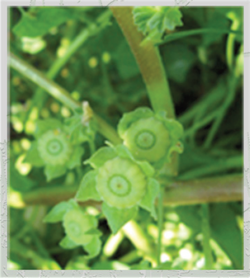_______________
A big part of food management at home is reducing waste. There are many ways to do this.
Serve only what you’ll eat. Refrigerate, freeze, or re-purpose leftovers. Or share with a neighbor. A friend of mine regularly fixes a plate of leftovers immediately after dinner, and takes it across the street to an elderly widow.
You can use a lot of your food prep trim - lemon peels can be used to flavor things, clean kitchen disposals, make homemade lemon extract and lemon sugar. Shriveled lemons, orange, grapefruit, or limes are good for making marmalade. Tops and bottoms of celery can be frozen and saved to make broth or to add flavor when you cook dry beans. Broccoli stems can be trimmed and cooked along with florets, or chopped and added to salad for a nutritious crunch. Things you can't re-purpose or eat can be fed to chickens, and many can be added to the compost pile.
If you wonder how much improvement you could make-- and how much money you could save on food!-- remember this:
“What’s measured gets managed.”
For one week, notice, measure, and take notes on what gets thrown out.
Aramark, a food service contractor, began doing this, and has reduced their food waste by nearly half (44%). For them, that was 479 tons of food saved from being sent to landfills.
This is an interesting article on what some restaurants have done to reduce waste. Most of what they've tried works in homes, also.
You may have heard that in the US we waste 40% of our food-- 63 million tons of it per WEEK. But do you know where that waste is happening?
The largest share of it (43%) is happening in our homes-- 27.1 million tons of it per year. That's about 51 ounces per person, per week, or 3.17 pounds. If my family was average, that would mean the 8 of us currently at home would be throwing out 25 pounds of food every week. Shocking!
That would count food trimmings when I'm cooking, vegetables and fruits that went bad before getting used, whatever is wasted on a plate, leftovers that didn't get eaten in time, and anything that got burned too badly to eat. :)
We waste much less than average, though, and truthfully throw out very little. We belong to the "Clean Your Plate Club" that my grandma and mom talked about; all but the tiniest kids have learned to only serve up what they are willing to eat. We serve the 2- and 4-year-olds their food, and only in small amounts. If they want more, they get it after the other food on their plate is gone. Usable trimmings get saved for soup or broth. Unusable ones go to the chickens. Produce that went bad gets washed and trimmed; any good parts are used, bad parts go to the chickens. (We call these, "chicken treats"!) Bananas and apples that are getting mushy get put in smoothies or in baked goods. We understand what "expiration" dates mean on food, and so use our senses of smell, sight, and taste to know if they're still fine. (And they ARE, for much, much past those dates.) When I miss a container of leftovers in the back of the fridge and find it after a week, that goes to the chickens too. Somehow we had THREE gallons of milk go sour this week, so they were turned into quick cheese; the whey went in muffins and bread.
Let’s look at how to reduce waste with one item- MILK.
What can you do when milk goes sour? This applies whether it happens before the ‘sell by’ date or after. Why does milk go sour? Does that mean it will make you sick?
Milk is high in lactose, which is the natural sugar found in milk. When bacteria are introduced to the milk, they eat the sugars and convert them into lactic acid (=fermentation). This means the milk has less sweetness, and more sourness. This is the process used and controlled when making yogurt, cultured buttermilk, cottage cheese, and more.
Some bacteria can make you sick, others are perfectly safe. Because you don’t know which bacteria made your milk go sour, using uncooked sour milk has a possibility of making you sick. Cooking with it, however, kills the bacteria, and is therefore safe.
Ways to use sour milk
-use it in place of buttermilk in pancakes, biscuits, chocolate cake, cornbread, wheat bread, or any other recipe.
-freeze it for using in recipes next time.
-pour a cup around your garden plants- it’s good fertilizer! Milk is used to help grow giant pumpkins, and helps prevent blossom end rot in tomatoes.
- feed to chickens, pigs, or dogs (boil it first if you’re concerned for your dogs)
- make CHEESE!
That’s right, you can take sour milk and turn it into cheese. The fastest, easiest ones to make are cottage cheese and Queso Fresco, a mild fresh cheese. The method for both is the same until after the cheese curds are drained.
One gallon of milk will make about one pound of cheese.
Cheese from Sour Milk
You will need:
Sour milk
Salt
Vinegar or lemon juice—maybe.
Spray the inside bottom of a heavy saucepan with nonstick cooking spray. Heat over low for about a minute to form a coating-- this helps the milk proteins NOT stick to the bottom of your pan.(You can skip the spray and still be fine. Just stir more.) Add your sour milk, and heat over medium-high until the milk starts to steam, stirring often. If your milk is sour enough, it will start to curdle-- separating into curds and whey. (Remember "Little Miss Muffet"? Curds are the white clumps, whey is the yellowish liquid left behind.) If your milk isn’t separating on its own, add up to ¼ c. of vinegar or lemon juice, a few DRIPS at a time, stirring after each addition. The milk will immediately start to curdle. Remove from heat and let it rest for one minute.
Put a fine-mesh sieve over a large bowl and pour the curds and whey into the sieve. Move the sieve to the sink, and rinse with hot water to get the acid out. Rinse with cold water for about a minute, until no more whey is in it. Add salt, ½ tsp. per cup of curds.
Cottage Cheese-
For each cup of curds, stir in 2-4 Tbsp. of yogurt or sour cream. Cover and refrigerate. This works great in recipes like lasagna. I can make a batch of cottage cheese (using dry milk powder) faster than I can drive to the store and purchase it. (That’s saying something; the store is about a mile away.)
Queso Fresco-
After draining, rinsing, and salting the curds, put them in a couple layers of cheesecloth or on a flat (non-terrycloth!) dish towel. Twist the top of the fabric closed, and tightly squeeze the cheese over the sink. More liquid will come out. Attach the twisted part of the towel (your ‘bag’) to a cupboard handle, and set a bowl under it to catch any more drips. Let hang overnight.
If you want a nice flat, round shape, instead of hanging the bag, set it inside something round—a clean, empty 29 oz peach can, a food storage container, or whatever you have. Set something on top of the cheese, and put something heavy on top of it to press it down. Let that sit overnight.
In the morning, wrap and refrigerate the cheese. Use within a week or two; this one doesn’t have a long shelf life. Here are ways to use it. https://www.thekitchn.com/queso-fresco-the-cheesemonger-91408
---------------------------------------
Now you have leftover whey - a yellowish, clear liquid that contains protein, carbs, calcium, phosphorus, and several B vitamins.
The resulting whey in this recipe is ‘acid whey’ (versus ‘sweet whey’) because it is a little acidic. How to use it? Very much as you would sour milk or buttermilk. Use in most recipes that call for water or milk. Use it as a tenderizing marinade for meat; add flavors and spices as you like. Use it to make whey lemonade, feed it to animals (chickens love it!), or as a last resort, pour in your compost bin. It’s also reportedly used as a great hair rinse, but I haven’t tried it yet.
What else have you done with sour milk, or with whey?


 RSS Feed
RSS Feed